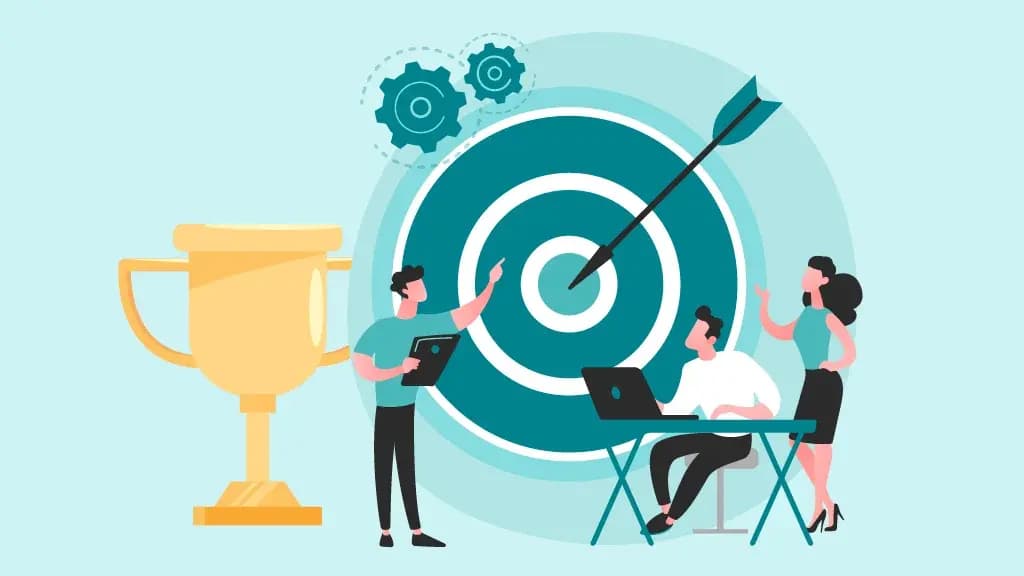Recent Trends in Employee Recognition & Rewards System in 2025

Team AdvantageClub.ai
October 9, 2025

In the future of business, one core element remains constant. The power of rewarding and recognizing employees. Acknowledging and appreciating employees is not just essential; it’s a strategic imperative. Read on for cutting-edge Rewards and Recognition trends in 2025 poised to revolutionize the scenario.
The success of any organization hinges on the strength and vibrancy of its workforce. So, cultivating a conducive environment is a fundamental pillar of sustainable growth. Recognizing this, a significant shift is underway in the landscape of rewards and recognition. Companies are moving beyond traditional approaches. They are embracing innovative strategies that resonate with their employees.
Below are some of the key rewards and recognition trends that we have been observing in 2025

2025: Advent of AI in Employee Rewards and Recognition
In 2025, the landscape of employee rewards is undergoing a significant shift. As we approach the new year, we need to reshape how organizations engage and encourage their workers. AI is transforming traditional methods into smart, individualized solutions that provide favourable outcomes. Leading this evolution is AdvantageClub.ai, a pioneer in AI-powered R&R solutions that assist businesses in developing powerful programs that actually engage with their employees. Let’s look at how AI is reinventing rewards and recognition in the modern workplace.
1. Pay for Skills and Performance
Remember when years of service were the primary criteria for recognition? Not anymore. In 2025, it’s all about identifying efforts, skills and outcomes. The trend reflects a greater emphasis on upskilling and reskilling, with AI suggesting the most relevant skills to learn. AI-powered solutions, such as Advantage Recognition, objectively evaluate employees’ contributions, concentrating on the distinct value they bring to the table. Companies that link rewards with competence and success improve morale while remaining competitive in a rapidly changing job market.
2. Personalization
Generic rewards no longer cut it. Employees want recognition that feels personal and meaningful, and AI is making that possible. By evaluating employee preferences and habits, AI enables businesses to provide truly meaningful presents and experiences. Employees may select the rewards that are most meaningful to them with tools like Advantage Marketplace, and the personalization promotes a sense of ownership and appreciation. This level of customization is not just smart but also a game-changer in terms of creating loyalty and motivation.
3. Instant Recognition
Delayed recognition has no room in today’s fast-paced business world. AI-powered quick and instant recognition provides immediate feedback that encourages great behaviours, enhances morale, and builds an appreciation culture that spreads across teams. Managers and peers may use platforms like AdvantageClub.ai to recognize successes in real time, whether it’s completing a project or reaching a crucial milestone.
4. Holistic Employee Wellness
Recognition isn’t just about rewards; it’s about supporting the individual. AI is revolutionizing wellness-focused R&R programs by tailoring solutions to individual needs. Advantage Wellness uses AI to recommend mental health support, fitness benefits, and flexible work options that align with each employee’s unique goals. This holistic approach helps create a healthier, happier workforce ready to take on challenges with renewed energy.
5. Cultural Momentum
A good company culture is not created by chance; it has to be deliberate. AI can assist organizations in building a stronger sense of purpose and belonging by aligning rewards with their core values. The alignment promotes long-term loyalty while developing the relationships that enable teams to thrive. Advantage Communities create venues for employees to connect, collaborate, and celebrate shared successes that are aligned with business values.
6. Employer Branding
A great R&R program doesn’t just benefit employees—it enhances a company’s reputation as an employer of choice. Transparent and well-structured systems powered by AI show the world that your organization values its people. Tools from AdvantageClub.ai help companies build cohesive and impactful employer branding, attracting top talent while retaining their best employees.
7. Digitization: Impact on Recognition
The digital transformation of R&R is here, and AI is leading the charge. From gamified recognition platforms to blockchain-secured rewards, technology is transforming recognition programs into smarter, more engaging, and data-driven systems. AI-powered solutions improve program management, give real-time information, and provide engaging experiences for both employees and employers.
The above trends are poised to play a pivotal role in shaping a motivated, engaged, and high-performing workforce in 2025 and beyond.
Usage of Rewards
The statistics from the Advantage Club study shed light on the preferences and gaps in employee reward systems.The study reveals a clear trend: over half of employees (52%) prefer monetary rewards over other forms of recognition. Conversely, only 24% prefer non-monetary rewards. This strong preference for financial incentives stems from their tangible nature and versatility. Gift cards or experiences may not align with everyone’s needs or interests. Money allows employees to address their priorities and fulfill personal desires.
Alarmingly, a quarter of the surveyed employees reported not receiving any rewards. This statistic underscores a critical gap in many organizations’ reward strategies. It emphasizes the urgent need for a more inclusive and comprehensive approach.
The numbers tell us loud and clear that money matters to employees. So, it makes sense for companies to include financial incentives in their engagement plans. The study also found that money can act as a mitigating factor in controlling attrition. With fair pay and meaningful financial rewards, companies can build loyalty and keep their best people from walking out the door.
Also, while money is important to most employees, many feel unseen and unheard at work. To fix this, companies need to create a well-rounded rewards system. Ensuring everyone gets recognition is key to building a company culture where everyone feels valued and engaged.
Rewards and recognition are not just HR initiatives. They are essential components of the relationship between employers and employees. It leads to happier employees and a better company culture, and it even helps the company be more successful in the long run. The trends show the importance of paying for skills and performance and increasing focus on holistic employee well-being. Data analysis, AI, and digital solutions are transforming R & R programs. They are becoming more personalized and rewarding experiences. It’s time our R&R strategies keep pace with these changes. Learn about automation trends driven by Agentic AI Engagement
Employee Recognition and Reward System Market Overview
The recognition and rewards space isn’t just growing, it’s booming. Companies everywhere are realizing that a well-structured recognition program is more than a perk; it’s a business driver. Let’s explore the market’s size, growth, and the forces shaping this fast-evolving industry.
Market Size and Growth Projections
- The employee recognition software market is expected to hit USD 19.6 billion in 2025 and reach USD 48 billion by 2035, growing at a 9.4% CAGR (Future Market Insights).
- Another analysis values the market at USD 35.21 billion in 2023, with projections of USD 56.55 billion by 2030 at a 7% CAGR (Verified Market Research).
Regional Highlights
- In North America, the recognition software segment is projected to grow from USD 3.42 billion in 2025 to USD 8.86 billion by 2035, nearly a 10% CAGR (Future Market Insights).
- Rapid adoption is also seen across Europe and Asia-Pacific, with global digital transformation creating new growth hubs.
Market Drivers & Challenges
- Key growth drivers include the shift to digital-first platforms, peer-to-peer recognition, and real-time feedback systems that integrate seamlessly with HR tools.
- Cloud-based platforms are accelerating adoption by lowering entry costs and improving scalability for both large enterprises and SMEs.
- The challenge remains in ensuring that technology doesn’t overshadow the human element of recognition, which employees still value most.
Employee Recognition Industry Analysis
The software powering recognition programs has come a long way from simple “thank you” notes. Today, it’s an ecosystem of cloud platforms, mobile apps, and integrated tools that make appreciation seamless and impactful. Here’s a closer look at how the software market is taking shape. Guide to employee recognition software.
Market Segmentation by Company Size
- Cloud-based solutions dominate thanks to affordability, flexibility, and ease of integration with HR systems.
- On-premise deployments still hold value for companies with heightened data security needs or strict compliance requirements.
- Recognition platforms compete by offering unique blends of peer recognition, performance management, and employee engagement tools.
Trends in Features & Pricing
- Peer recognition tools are now a must-have, empowering employees to celebrate each other’s contributions.
- Gamification and performance analytics are gaining ground, making recognition more engaging and data-driven.
- Subscription-based pricing models are standard, with tiered features for enterprises of different sizes.
- Integration with HR, payroll, and collaboration platforms is a rising priority, ensuring recognition is part of the employee’s daily workflow.
Employee Recognition Industry Benchmarks
Numbers tell the real story behind recognition. From boosting engagement to reducing turnover, benchmarks show how powerful recognition programs can be when done right. These insights give organizations a clear picture of what success looks like in practice.
Program Effectiveness
- Employees who receive high-quality recognition, as defined by hitting multiple pillars of strategic recognition, are 45% less likely to leave their organization over two years. Those recognized across four or more pillars are 65% less likely to be actively seeking a new job. (Gallup)
Engagement & Retention Impact
- 83% of HR leaders report recognition programs directly boost engagement (SelectSoftware Reviews).
- Firms with effective recognition programs report 31% lower turnover. Employees who feel unseen are nearly twice as likely to quit (SelectSoftware Reviews).
- Recognition also has a financial upside, companies with engaged employees see 21% higher profitability (SelectSoftware Reviews).
Budget & Adoption
- While budgets vary widely, the ROI case is clear: organizations that invest consistently in recognition systems report stronger culture, higher retention, and measurable business gains.
Employee Recognition Technology Trends for 2025
Recognition is no longer limited to plaques or gift cards, it’s being transformed by technology. With AI, mobile platforms, and even blockchain entering the scene, the way employees are celebrated is smarter and more personalized than ever. Let’s break down the innovations setting the stage for the future.
Employee Recognition Software Market Evolution
- AI tools help leaders craft meaningful, emotionally resonant recognition messages.
- Machine learning also powers smart reward suggestions, sentiment analysis, and helps identify high-potential employees through performance data.
Social Recognition Platforms
- Mobile apps are becoming the default recognition channel, they provide employees the ability to send and receive appreciation anytime, anywhere.
- Social-style recognition feeds are helping teams celebrate wins together, especially in hybrid and remote workplaces.
ROI and Performance Metrics
- Platforms now provide real-time dashboards that track recognition frequency, engagement impact, and ROI. Discover way to establish rewards and recognition ROI in your organization
- Advanced integrations with HR and payroll systems ensure recognition is tied directly to employee performance and business outcomes.
Emerging Tech: Blockchain & Gamification
- Gamification is adding fun, competitive elements that keep recognition programs lively and engaging.
- Blockchain, though still emerging, is being explored for secure tracking of reward points and transparent reward redemption systems.
Frequently Asked Questions
Q1: What are the current employee recognition trends?
This year’s recognition trends show how workplaces are adapting to employee needs in quick, thoughtful, and tech-savvy ways:
- AI-powered personalization – Smart systems tailor recognition so each person feels seen and valued in ways that matter to them personally.
- Real-time recognition – Little wins can be celebrated right away thanks to systems that offer instant feedback in the moment.
- Mobile-first platforms – Recognition tools now live on smartphones, so appreciation can happen anytime, anywhere.
- Social recognition – Shout-outs from peers, shared in social-style feeds, are helping build positive team culture.
- Wellness integration – Recognition is increasingly linked with employee wellbeing, reinforcing that mental health and appreciation go hand in hand.
- Data-driven insights – Recognition analytics now let leaders track what’s working, making recognition smarter and more effective over time.
These trends highlight how the future of employee recognition is moving toward empathy, personalization, and adaptability.
Q2: What is the employee recognition software market size?
Here’s the real scoop based on recent reports, presented in a way that’s clear and helpful for people and for search engines:
- According to Grand View Research, the global employee engagement software market, which includes recognition tools, was estimated to be valued at USD 1.05 billion in 2024. It is set to rise to USD 2.61 billion by 2030 and is expected to grow at a 16.4% CAGR from 2025 to 2030 Grand View Research+1.
- Fortune Business Insights offers a similar perspective, forecasting rise from USD 1.05 billion in 2024 to USD 3.52 billion by 2032, with a 16.3% CAGR Fortune Business Insights.
- A more focused look at the employee recognition software market puts its size at USD 1.42 billion in 2025, targeting USD 3.0 billion by 2033 and a CAGR of 8.67% over that period Market Reports World.
- Regionally, in North America, this market was around USD 14.49 billion in 2024, and is projected to increase at a 5.7% CAGR through 2031 Cognitive Market Research+1.
Why this matters
- The surge in engagement software reflects a growing focus on keeping teams motivated and connected—even when they work across time zones or remotely.
- Recognition tools that pair with HR systems and bring behavioral data to life are becoming central to HR technology stacks. Learn more about [AI-powered recognition platforms]
R&R Trends: What's Next for the Industry
Regulatory and Compliance Considerations
- Tax implications matter – Many rewards, such as bonuses or gift cards, can be taxable depending on the region. Clear communication helps employees understand the real value of what they receive.
- Global workforce challenges – Labor laws and recognition rules vary by country, making compliance a key factor for multinational organizations.
- Data privacy is critical – Recognition software collects sensitive employee data. Following GDPR, CCPA, and other privacy laws ensures security and trust.
- Risk reduction – Compliance-driven recognition programs protect organizations while still keeping appreciation meaningful and impactful.
Sustainability in Recognition Programs
- Eco-friendly rewards – Companies are moving from physical gifts to digital options, charitable donations, and experiences that reduce environmental impact.
- Green initiatives – Some recognition programs include tree-planting rewards or contributions to community projects in an employee’s name.
- Authentic alignment – Recognition tied to sustainability reflects company values, making employees proud to be associated with the brand.
- Long-term impact – Sustainable recognition programs are built to last, ensuring consistency, scalability, and genuine employee engagement over time.
What's Next?
As AI continues to revolutionize R&R, the possibilities are endless. Organizations can design programs that not only encourage but also inspire their employees by harnessing innovative technologies and prioritizing their requirements. With AdvantageClub.ai at the helm, businesses can create a future in which rewards are intelligent, personalized, and meaningful.
The future of employee recognition is about more than just staying relevant; it’s about setting the standard. Are you prepared to welcome this transformation? Are you ready to embrace this transformation?





